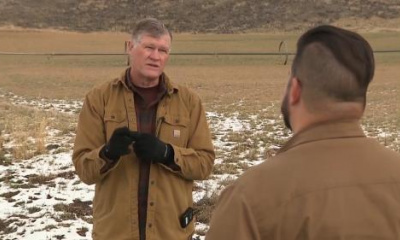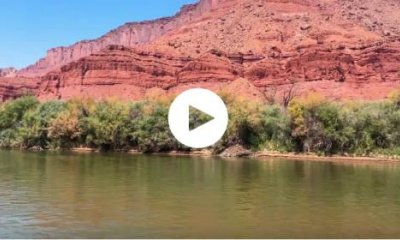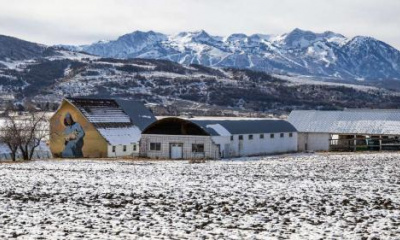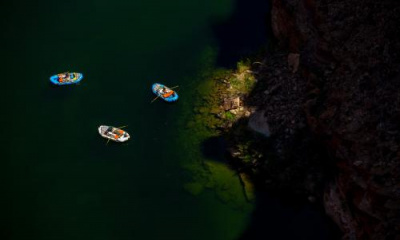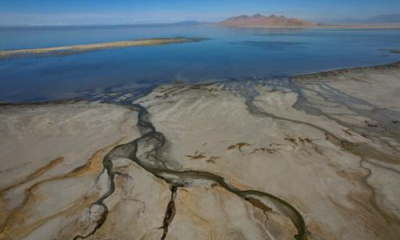Editor’s note: This story is part of a series of stories by the Great Salt Lake Collaborative that asks the question: Why save the Great Salt Lake? It explores what opportunities open up in agriculture, daily life, industry and recreation by restoring the lake — or are ultimately lost without it.
BENSON, Cache County — Kelby Johnson and his brother are the fourth generation to run Johnson Family Farms, which was once a dairy farm that turned to vegetables and seed crops in 2006.
“A lot more risk to go with a little more reward,” Johnson said. “If you do the math, the prices that we get for grain right now are less than what they got at the bottom of the great depression.”
Johnson said it has weeded out a lot of farms. According to the U.S. Department of Agriculture, more than 500 Utah farms went out of business between 2017 and 2022.
“This year alone there have been about five or six farms in Cache Valley alone that have given up because it’s just not profitable.”
Utah’s drought, termed by BYU ecosystem ecology professor Ben Abbot a megadrought, has made that pinch harder.
“A lot of guys took yield hits during that drought, and that’s just kind of the nature of the beast,” Johnson said.
Heavy water years, like 2023’s deepest-ever measured snowpack, help farmers. Updated water practices — like drip irrigation — can help farmers be more efficient with water use, but the farmers KSL TV spoke to are worried about what will happen in years after they use less water.
“The state’s had their policy of use or lose it for a long time, which does not incentivize efficiency, it really makes everybody a little fearful that well the state’s just going to take my water,” Johnson said.
Hannah Freeze, Utah agriculture water optimization program manager, manages new programs to get farmers help with the startup costs of putting in more efficient watering systems. She said a new state law has changed the format of Utah’s former policy of claiming unused water for future years.
“Often our producers have been concerned of if you don’t use it you lose it, and this bill changes that, that you can conserve water and split the water that you’re not going to use and put it to another beneficial use and still maintain your water rights,” Freeze said.
Part of the new state law allocates $200 million to matching grants to pay for half of the cost of replacing old irrigation with more efficient ones. Those applications open toward the end of 2023.
“If we can implement some of these practices through water optimization it helps us be more drought resistant,” Freeze said.
Matt Yost, a Utah State University agri-climate extension specialist works with farmers in Utah to identify best practices for their operation.
“There’s some new technologies that get water closer to the ground,” Yost said.
Significant amounts of water lost in irrigation are from evaporation; 32% of irrigation in the Great Salt Lake watershed is wheel line irrigation, a system that releases water 5-to-6 feet off the group, making it vulnerable to evaporation.
“There is opportunity there if we can to convert many of those wheel lines to center pivots to save quite a bit of water,” Yost said. He said grants have helped farmers start to make conversions.
“We’re seeing a lot of change, a lot of upgrading, a lot of technology adoption, and that I think will just continue.”
Johnson said it will take time for farmers to trust that the state has truly changed its tune on “use it or lose it.”
“The state has put up a lot of money to try and get people to go to pivots and drip irrigation which is good I think it’s a good start and a direction we need to be going because we’re all in this together,” Johnson said.
He said there is concern from some farmers he talks to about taking state money for fear of hidden conditions that come with it.
“If we really are being honest and truthful with these programs, I think it’s a really good direction to go,” he said.
It’s a direction farmers and the state hope will ensure water and food security for future generations.

